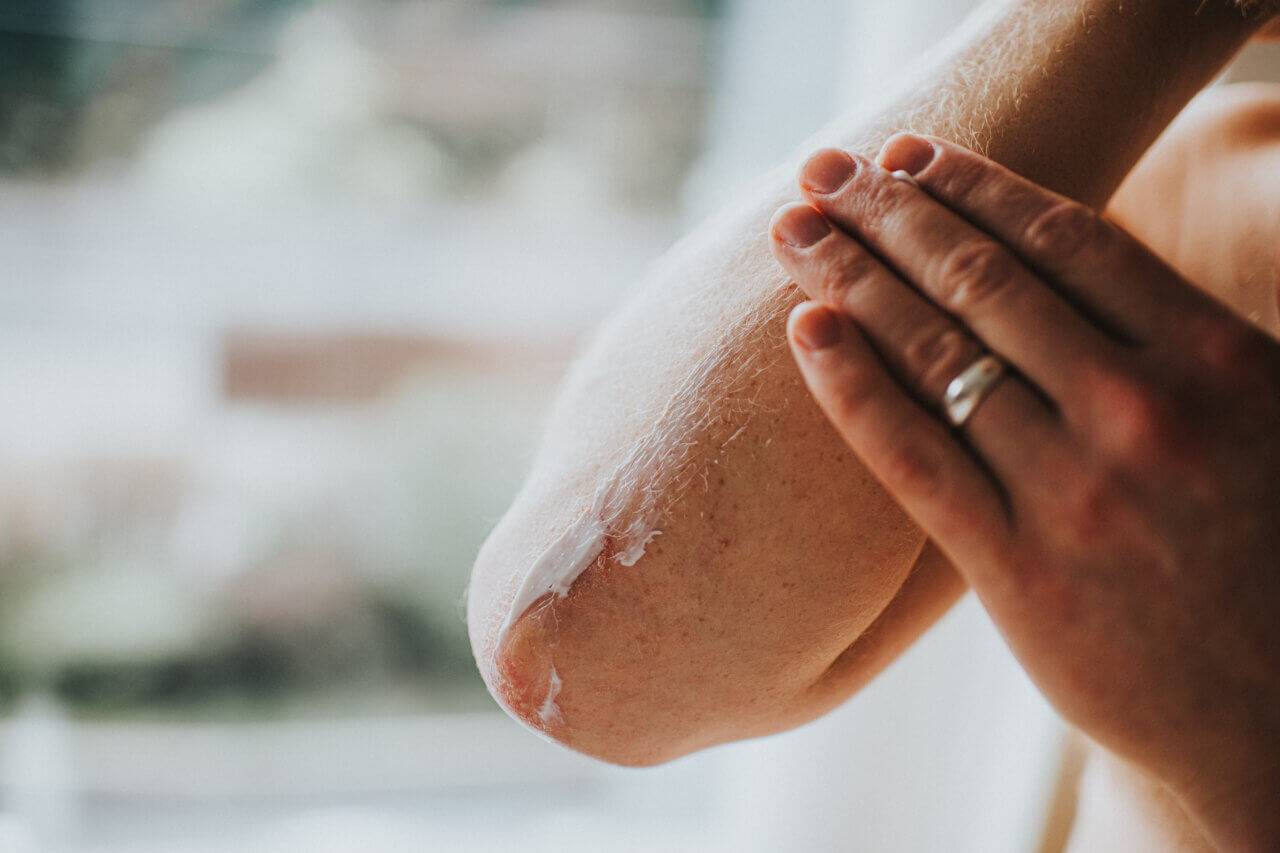What Is a Skin Graft?

Clinically reviewed by Nicky Wright DNP RN.
A skin graft is a surgical procedure where healthy skin from one place is transplanted to another. The graft takes the place of missing or damaged skin due to injuries, burns, infections, etc. Patients may also need a skin graft after a surgeon removes skin cancer.
Skin grafts typically bond well with the surrounding skin. However, the patient may need another procedure if a graft doesn’t heal properly.
Where Do Surgeons Get the Skin Used in Skin Grafts?
Grafted skin comes from another location on the patient’s body, this is called an autologous skin graft.
If the patient doesn’t have enough healthy skin for the procedure, the surgeon may use skin tissue from a cadaver (called an allograft). Skin from an animal, such as a pig, may also be used, this is called a xenograft.
Allografts and xenografts are deemed temporary solutions. They’re kept in place until the existing wound or skin damage has healed or the patient has grown enough skin for an autologous skin graft.
Full- vs. Split-Thickness Skin Grafts
The two main types of skin grafts are:
- Full-thickness skin grafts. In this procedure, the surgeon transplants the top and entire second layer of skin. It’s often used in areas not typically covered with clothing, like the face. These skin grafts take longer to heal. Donor skin comes from the arm, collarbone area, or groin, and the surgeon closes the area as part of the procedure.
- Split-thickness skin grafts. With this type of skin graft, the top layer and only part of the second layer of skin are used. The donor skin typically comes from the back, buttocks, belly, or thigh, and the area heals in a few weeks.
An additional type of skin graft is a composite graft. It involves transplanting skin along with cartilage and other soft tissue. This procedure can repair damage to the ears, fingertips, or nose.
Three Stages of Skin Graft Healing
Full-thickness and split-thickness skin grafts heal somewhat differently, though the healing process has three phases in both cases.
With full-thickness grafts, the area tends to swell in the first 24 hours. The care team provides medication to help with the pain. In 48 to 72 hours, the blood vessels in the area start to connect. Finally, feeling returns to the skin over the next several weeks to months, or longer.
In a split-thickness skin graft, the site has a red or purple color immediately after surgery. The donor skin starts to connect with the surrounding skin in 5 to 7 days. Then, over several weeks, the graft becomes fully connected.
Preparing for and Recovering After a Skin Graft
As you prepare for a skin graft, your doctor will ask you about any medications you take and may have you change your schedule until after the procedure. Also, smoking and using other tobacco products can delay healing, so your doctor may have you avoid them before your surgery.
You’ll also need to avoid eating or drinking after midnight the night before your surgery. That’s to ensure you don’t have anything in your stomach that could choke you if the anesthesia upsets your stomach and you vomit.
After your procedure, the focus will be on keeping the graft area clean and limiting movement. Your care team will provide instructions on when and how often to change the bandage. They may also advise you to keep the graft area elevated above the level of your heart, if possible, to reduce fluid build-up and swelling.
You should contact your care provider if you notice signs of a problem with your skin graft, including:
- Fever of 100.4 degrees or higher
- Excessive bleeding
- Edges of the graft pulling away from nearby skin
- Infection signs like red streaks leading away from the site, increased swelling or redness, or odor
- New or worsening pain
- Other signs your care team tells you to watch for
Learn More About Skin Grafts from Baptist Health
If you need a skin graft, your doctor will likely refer you to our orthopedic care team.


.jpg?rev=1e34cfc14356429384f3325f6e567a20)